A Planeswalker’s Guide to Zendikar: Ondu
This content was deleted from the Magic website during an update. The original page can be accessed via Wayback Machine here.
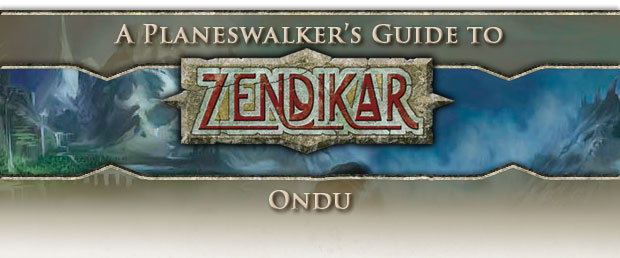
Ondu is a continent in the southwestern quadrant of Zendikar that juts into the Silundi Sea. The continent shows signs of influence from ancient civilizations, but it is nature that dominates here, taking precedence over small settlements of humans, kor, goblins, and merfolk.
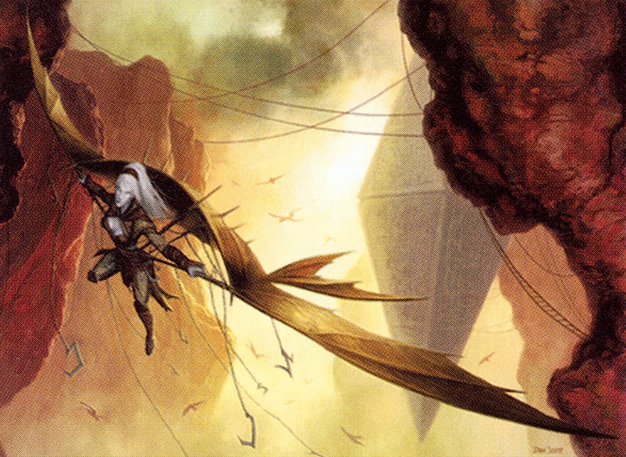
Verticality
The geography of Ondu feels almost vertical. The precarious Makindi Trenches, the skyscraping trees of Turntimber, and the depths of the Crypt of Agadeem and the Soul Stair all contribute to the strange sensation that travel in Ondu runs perpendicular to the horizon rather than toward it.

“We count the cliff strata as we soar, their layers marking time like the rings of trees, history laid out by altitude. Ondu’s journey has been like our own, stretching high beyond its lowly beginnings, striving to kiss the clouds. When we need guidance we aim our kitesails straight down, plunging into the shadowed Trenches, the years dashing by the tips of our canvas wings—and we pull up just before the bottom, surrounded by the oldest of times, whose stony memories enrich our perception.”
Wamata, kor skyfisher

Islands of Ondu
The region of Ondu is composed of one central landmass and the three major islands off its coast: the large, southernmost island of Agadeem, the smaller, temperate Beyeen, and the tiny, sea-swept Jwar.
Turntimber, the Serpentine Forest
Turntimber trees
Only wild and brave creatures reside in Turntimber, a vast temperate forest on the Ondu mainland. Turntimber’s famous corkscrew-like trees twist into staggering heights, tracing lazy circles on the sky and providing the inspiration for the woodland’s name. Over decades and centuries, the trees bend and twist around invisible spikes of mana like a climbing vine around a pole. The mana feeds and strengthens the trees, pushing them to ever-greater heights. However, the mana spikes provide no physical support, so their overburdened root structures creak constantly as the trunks sway. This creaking has inspired stories of a secret language known only to the trees, which human shamans and druids call uksil. Many have been known to venture into Turntimber in hopes of cracking this sacred language, believing it to hold the key to the deep wisdom and lore of Turntimber.
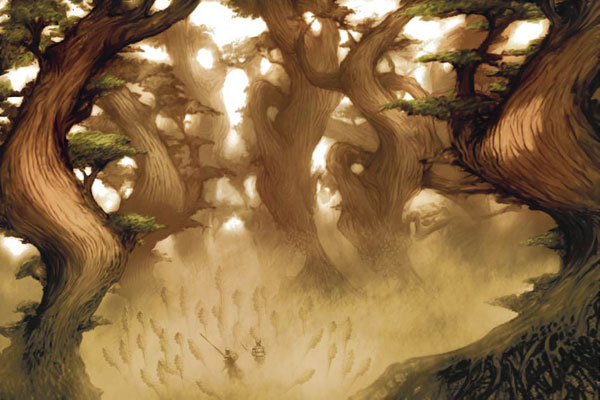
Wildlife
Turntimber supports a menagerie of dangerous creatures. The apex predator here is the baloth, a muscular, omnivorous hunter with claws that allow it to climb the spiraling trunks. Territorial baloths in search of prey have been known to leap from one tree to another with surprising nimbleness, and their jaws can slice through bone.
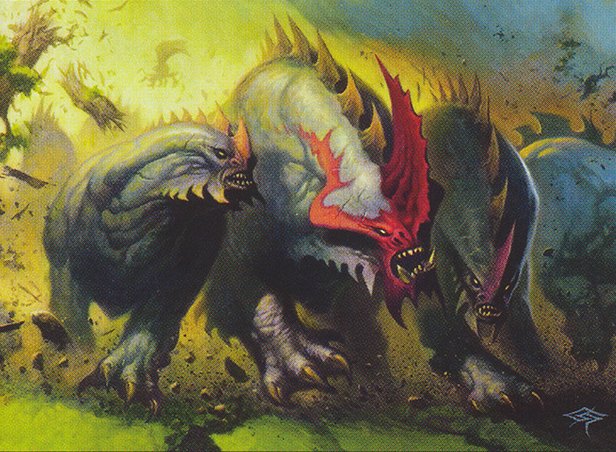
However, the dominant fauna in Turntimber is the snake, which fills predator roles at all scales in Turntimber. From tiny tree snakes to massive cobras, from the harmless to the lethally venomous, from the mundane to the mana-infused, serpents writhe and hunt throughout the woodland. Some elves believe the snake’s shape to be a symbol of mana itself, coiled around lines of mana just like the trees, and track their movements to detect patterns in mana flow.

“The floor of Turntimber writhes. Take my advice: take down your net traps at night, and sling yourself up in them.”
Rinta Bannock, Greypelt trapper

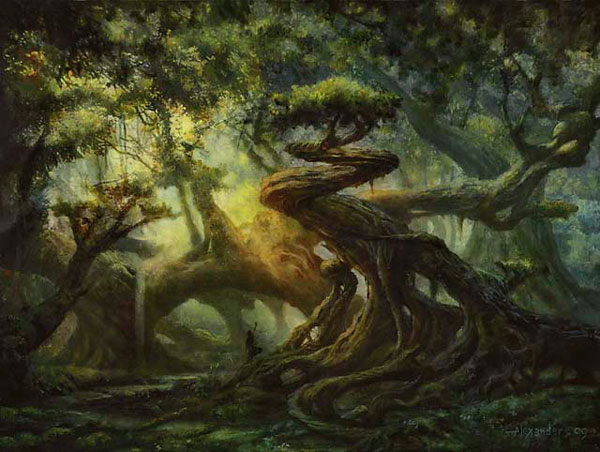
Greypelt
Greypelt is a small settlement of druids, hunters, and trailblazers on the outer edges of Turntimber. Its name comes from the tents made from the woolly grey hide of
Turntimber warthogs, although many different materials are used in the encampment. Explorers venture out from Greypelt into Turntimber to seek nodes of mana to harvest from the ancient, creaking trees, and have developed a way to temporarily “tame” and store small, stable quantities of primal mana. These parcels of mana are very valuable, and are attracting the interest of powerful expeditionary outfits.
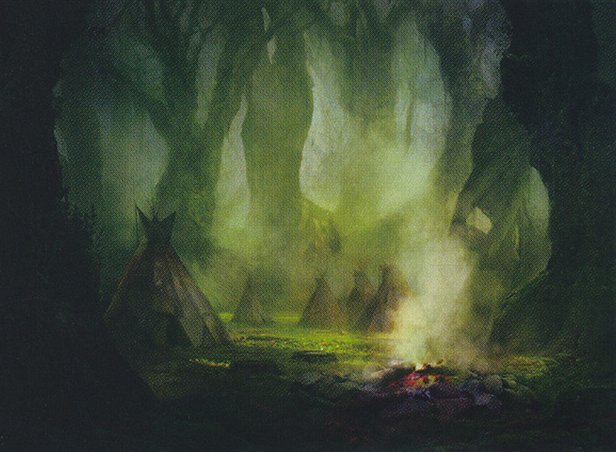
The Makindi Trenches
The Ondu mainland is crisscrossed by a maze of high-walled canyons called the Makindi Trenches. The canyons represent sheer drops down hundreds of feet, some terminating in whitewater rivers, others ending in bare rock. Mana-fueled winds howl through the canyons at odd intervals, making it important for climbers and builders to attach their instruments carefully to the cliff walls.
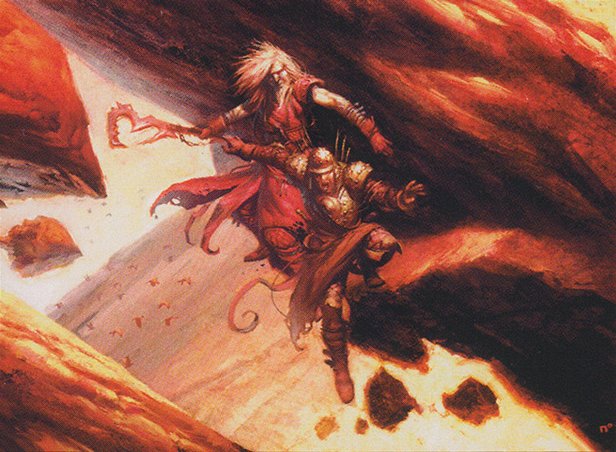
Inhabited cliffs
The walls of the canyons support a surprising ecosystem of their own. Birds, reptiles, and even humanoids such as goblins and kor nest on the trenches’ sheer surfaces. Trench giants scale the walls looking for crunchy animals to eat, and enormous spiders build trapdoors in the overhangs to snare fliers and climbers.
Raging rivers
Travelers usually travel along the cliff’s edges on wagon trails, but a much faster and more dangerous mode of travel is by river. Fast-moving whitewater rivers course through many branches of the Trenches.

“For these aching weeks navigating the maze of Makindi’s infinite ledges and switchbacks, the river has been a cool ribbon sparkling far below us. I proposed scouting down to the water, to see if there was a route our hurda could follow; a raft would only be days to build if we cannibalized the carts. Our guide just looked at me with those wide eyes. I insisted, citing the pace of our journey, but she just asked if we wanted to get there fast—or alive. I dropped the subject. When a merfolk doesn’t want to take the water route, I guess it’s wise to trudge on.”
Journey Log of Dansa Kur

Teetering Peaks
Throughout the canyons and plateaus of Makindi are famous boulders perched in unlikely, precarious, gravity-defying positions. They’re called the Teetering Peaks, even though they have not been seen to move. Historical changes in Zendikar’s fickle gravity may have caused these rocks to shift into their current positions, but some believe that they are deliberate traps set to lure—and then crush—curious passersby. Some mages study the locations of the Teetering Peaks, believing that their locations form a pattern or map that could have deeper significance to the region.
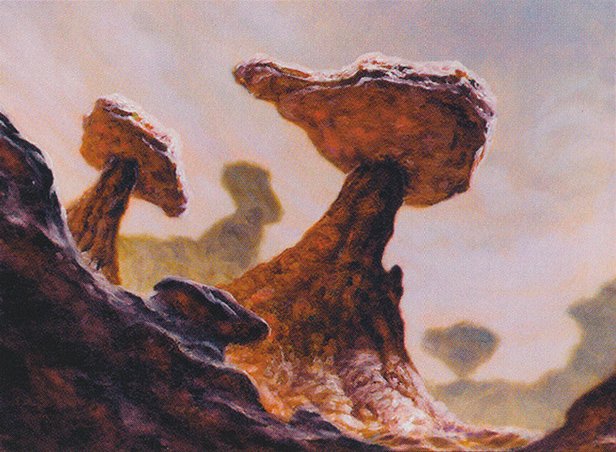
Prison of Omnath
Of the legendary places of Ondu, none is surrounded by more controversy than that of the Prison of Omnath. Omnath was supposedly a divine manifestation of the ferocious mana of Zendikar, a being that can be found in some incarnation in many creation myths of the plane. Some call Omnath the “flickering heart,” the origin of the primal mana that pulses throughout Zendikar. Despite the uncertainty of Omnath’s actual existence, a real site on a high mesa of Ondu has been dubbed the Prison of Omnath.

“I can’t share how I came by this knowledge, nor can I tell you all I know. But Zendikar’s anger is growing. Its heart bludgeons the bars of a failing cage. Those of us with a sharp machete and an appetite for danger—well, now’s the time for us to chase any quest that feeds our aspirations. The rest of you should find some out-of-the-way hovel, put your heads down, and pray.”
Sarikala, merfolk wayfinder

Binding Circle
If one travels to the top of a soaring Onduan mesa, through the dense forest that crowns it, and into a murky mire at the grove’s heart where shadows move and twist, one can find the binding circle that surrounds the entrance to Omnath’s prison. A complex arrangement of strange globular swamp-growths, stone hedrons, and animal bones, the circle creates an eerie sensation in those who approach it. The effect deters living beings from approaching the circle’s center, where a huge pit leads deep into the ground—hence, few travelers even come close to opening it. Those who have gotten close have died to the destructive surges of power that lash out from the circle.
Soul Stair
According to some, the pit in the center leads into the Soul Stair, an infinitely-long spiral staircase reportedly leading down into the bowels of the world. The Stair connects the relatively rational surface world with a seething, surreal void below, the place where Omnath, a being composed of raw mana, is forever imprisoned.
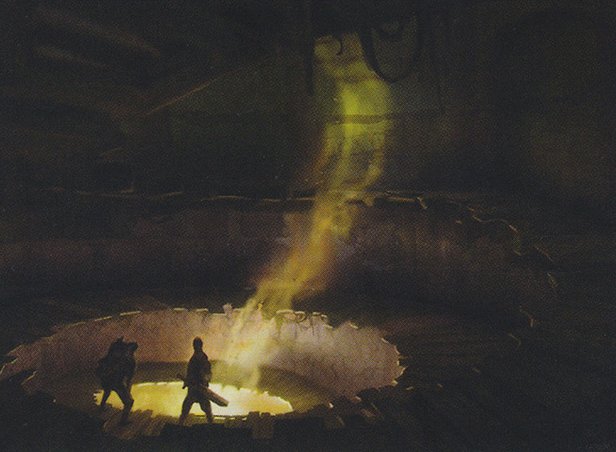
Ritual of Lights
Religious pilgrims from across Zendikar travel to the Prison of Omnath on a twice-yearly basis to perform the Ritual of Lights, a ceremony designed to protect the world from the release of Omnath. In their view, Omnath is a malevolent, chaotic, primeval force, and its release would represent the destruction of most forms of life. They encircle the site with seventy-seven candles and chant prayers and songs, believing that the ritual strengthens the magical “walls” that make up the Prison.
Jwar, Isle of Secrets
Near to the southern coast of the Onduan mainland is the isle of Jwar. Jwar has largely been written off by explorers due to the swirling Silundi Sea currents and territorial sea serpents that constantly encircle it, but archaeomancers contend that magic of great value and power lurks there. A beam of pure blue light can sometimes be seen shooting straight up out of the island—or down on it from above—leading to strange rumors about the significance of the island.
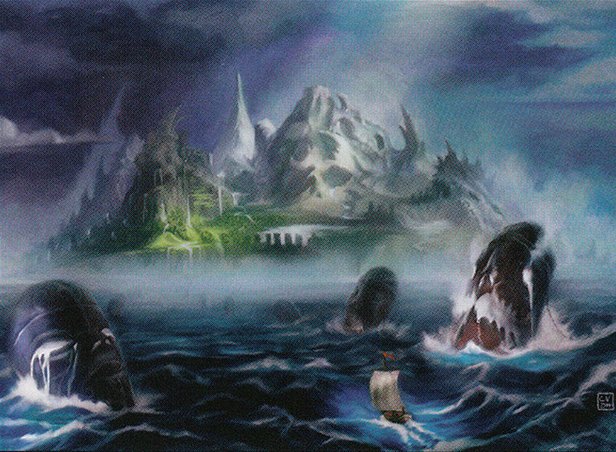
Faduun
Huge, alien-looking, granite heads known as the Faduun loom all around the isle of Jwar, many of them half-buried in the ground, tilting at odd angles. The Faduun radiate strong magic, but their purpose and history are unknown. Some claim to have heard them speak in forbidding tones, but in a language unknown to modern scholars.

“Another round? My tale is almost complete. So my grandfather sailed for Jwar, leaving my grandmother behind heavy with child, the child who would grow to become my father. Even when I knew her, my grandmother’s house was crammed with racks and racks of vellum filled with my grandfather’s scribblings, everything from treatises on the mysteries of the waves to songs composed of strange sounds that he called ‘the whispers of the Faduun.’ He left and was never seen again. Could he have died at sea? Certainly. I have only this feeling in my bones to tell me that his ship made it to shore, but that’s enough for me. My friend, I know he made it to Jwar, and that he may even have found whatever answers he sought. So, what do you say? Have another round, and I’ll tell you about the course we’ll take, skirting the storms of Serpent’s Maw, just as he did.”
Bara Mkede, captain of the Golden Manta

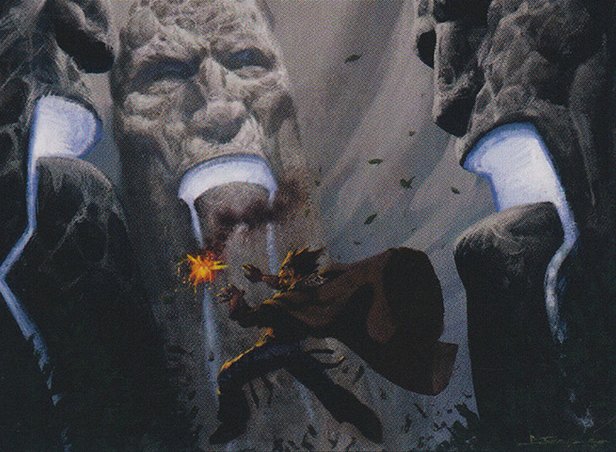
Strand of Jwar
On some cool nights, a streak of bluish light radiates skyward from the center of Jwar. The phenomenon originates from a deep, seawater-filled pit on the island, and attracts flying creatures such as drakes and even dragons. Some kor tribes call it the Strand, hypothesizing that it’s the spiritual thread that connects Zendikar to the afterlife, although some merfolk revile its magic as bad luck, even prohibiting their race from looking upon it. Planeswalkers recognize the Strand as a powerful manifestation of æthereal energy but have not determined its function.
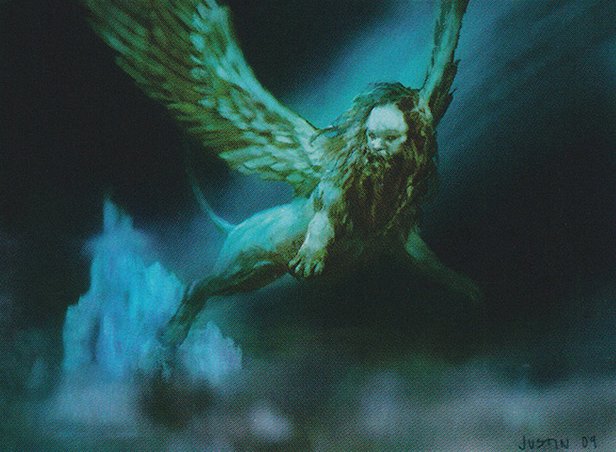
The vanishing dead
Some religious pilgrims take dangerous journeys to Jwar in order to bury their dead on the island. Bodies buried in the soil of Jwar, if watered like plants and cared for vigilantly, disappear completely, bones and all. It’s unknown what causes this phenomenon or where the corpses go. Some believe that these sacrifices of the dead to nature help pacify the natural forces of Zendikar.
Beyeen, the Crown of Talib
The God’s Crown
The island of Beyeen is actually several small volcanic landmasses connected by bridges of clinging vegetation. A ring of jagged, volcanic peaks rises from the center of the island, resembling a monarch’s crown. The kor call the small range the Crown of Talib, after their god of the earth. The Crown range is home to a number of volcanoes, including Valakut, the Molten Pinnacle, largest and most active peak of the Crown range.
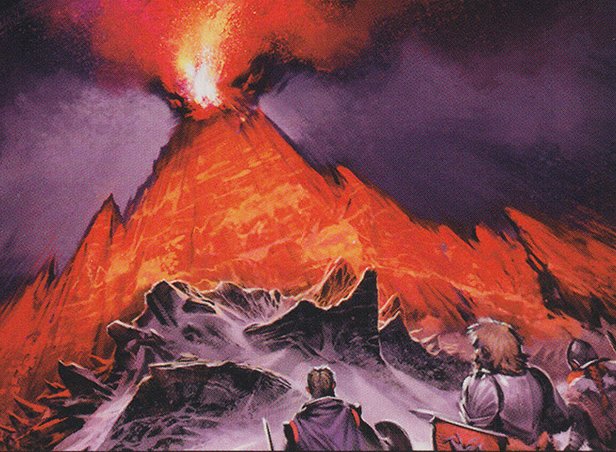
“Piston” mountains
Other, smaller crags on Beyeen show signs of ancient, dramatic forces. Powerful geomancy once forced the peaks from the tops of the mountains, causing them to periodically hover in midair above the craggy mesas beneath, then settle down again. These tectonic effects have since become overcome by the fierce mana energies of the volcanic chain, and now these “piston” mountains fly up and smash down again unpredictably. It’s seen as a mark of bravery to venture under these mobile peaks to look for valuable relics or to tap into the primal mana there, but many have died trying.

“My legs began running before I even knew what I was seeing. It was Dar, his arms in the air, his palms skyward, the way one might hold up a heavy curtain for another to pass through. Dust and pebbles rained down on our party as we dashed across the rocks, and the popping sound over our heads turned out to be the floating peak cracking, squeezed by shearing forces pressing in on all directions. I remember thinking there’d be no way he’d get out alive, lulling magic or no—and also that I should shout some sentiment of gratitude back at him before he died. To my regret, no words came. But when gravity asserted itself again, and we fell prone with the mountain’s shaking, he stepped out of the dustcloud like an angel. And so, he had to endure my gratitude for the rest of the journey.”
Bebea, Cliffhaven lightcaster, Tales of Noyan Dar

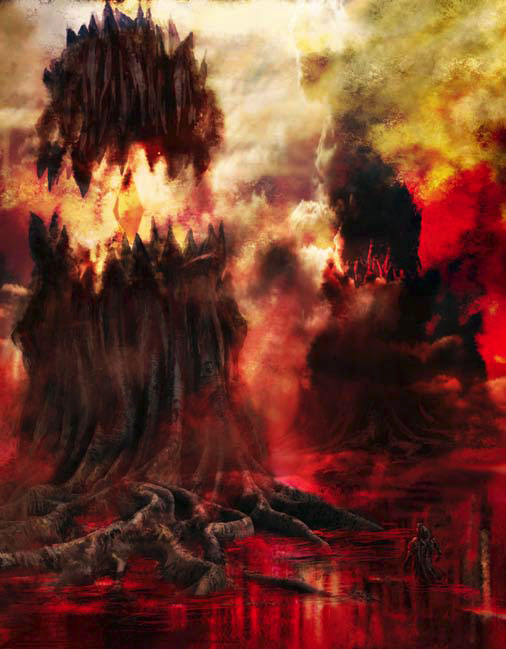
Wildlife
Beyeen is home to mighty lith wurms—hard-toothed burrowing wurms that feast on mountain goats, hyraxes, ogres, condors, and goblins. The lowland valleys of Beyeen are a temperate rainforest, supporting black-furred apes, dappled jaguars, tapirs, and duikers.
Zulaport
A transient community of mages, explorers, and artisans, of mixed races and origins, lives on the coast of Beyeen in a town called Zulaport. The economy of Zulaport is believed to be controlled to a powerful vampire named Indorel, who uses a network of goblin, human, and ogre thugs to ensure herself a cut of all the trade that happens around Beyeen.
The Boilbasin
Near the western coast of the isle of Beyeen is a group of massive tide pools that stair-step down the mountainous slope toward the sea. The pools mingle seawater with geothermally heated hot springs from below, creating basins that seethe with steam. The Boilbasin is said to be a favorite location of dragons, who use the boiling water to cleanse their scales.

“Day Nineteen. Climbed among the springs of Boilbasin. Most of us could only tolerate the second or third pool up from the sea, where the water was merely skin-flayingly hot—but Bikbi scrambled up even higher up the rocks, to a hazy, sulfurous lagoon that must have been the springs’ source. I’ve never seen a goblin’s skin so cherry-red, but he had a smile on his face; I think he boiled his brains.”
Ruta Legala, Ondu Expeditionary House


Hedron Fields of Agadeem
Mystic relics
The muddy savannah of the island of Agadeem holds a veritable graveyard of ancient stone hedrons, some the size of a fist, others the size of small buildings. This is in sharp contrast to Tazeem, in whose hedron fields the stones are still aloft and seem to be related to the Roil. In the case of Agadeem’s hedron fields, the stones have long since fallen and lay partially sunken in the earth, but they still have an effect on the land.
Strange laws
Though no one hedron appears to have any extant magical capacities, the effect of hundreds or thousands of them can have a marked effect. The laws of nature warp strangely around the Agadeem hedron fields, causing bizarre and unpredictable thaumaturgical and gravitational phenomena. In a strange distortion of the Roil, huge discs of earth thrust up from the ground, rotate in place, and settle down again at odd angles. Humid winds gather in knotted eddies, forming spheres of elemental air that encase groups of floating hedrons and trap flying creatures. Scholars speculate that the power of the hedron fields, if properly harnessed, could be great enough to accomplish almost unimaginable feats of spellcraft, but the erratic conduct of the hedrons has made it too dangerous for large-scale experimentation so far.
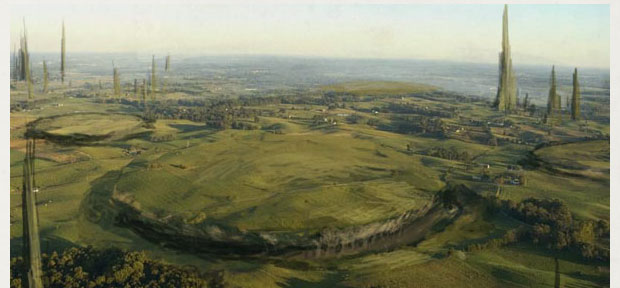
Kabira
A community of humans and other races has encamped near the Agadeem hedron fields, some to study the ruins, some to loot them, and some to worship them. The influence of the nearby ruins is clear in the architecture of the settlement; the architecture of Kabira mimics and incorporates the shapes and glyphs from the stone hedrons. A merfolk cleric-scholar named Viniva runs the Kabira Conservatory here, a small academy which sponsors research of the hedron ruins and passes on what it learns to the Lighthouse at Sea Gate. Some of the Conservatory’s recent research concerns the way that certain types of magic—particularly healing, protection, and some types of illusion—respond best near the hedron fields. Others have studied the hedron-mimicking architecture, claiming that, far from a simple artistic trend, it may actually represent a deep safety problem for the denizens of Kabira.
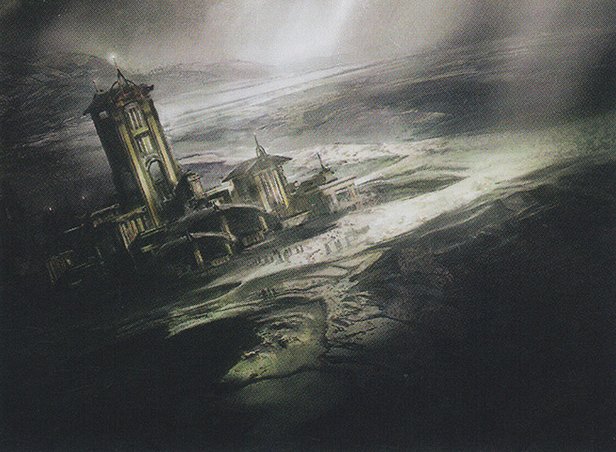
Three Masks
Multiple explorers have reported witnessing the phenomenon of the Three Masks, immense, floating, monstrous visages that generally appear as a trio. Whether it’s a psychic disturbance, a mirage, a transcendental spiritual experience, or just a series of tall tales is subject to debate. Descriptions of the masks vary, but some merfolk and kor scholars wonder whether they might be manifestations or visions of the three gods of their respective pantheons.
Crypt of Agadeem
Nestled into the canyons on the island of Agadeem is the Crypt of Agadeem, a natural cavern converted into a heavily trapped burial site. The mouth of the cavern is a huge natural archway lined with innumerable small, etched hedrons. The entrance chamber, called the Crypt Maw, is a cavern the size of a cathedral. It is home to thousands of bats and is believed by some to be haunted by malevolent spirits.
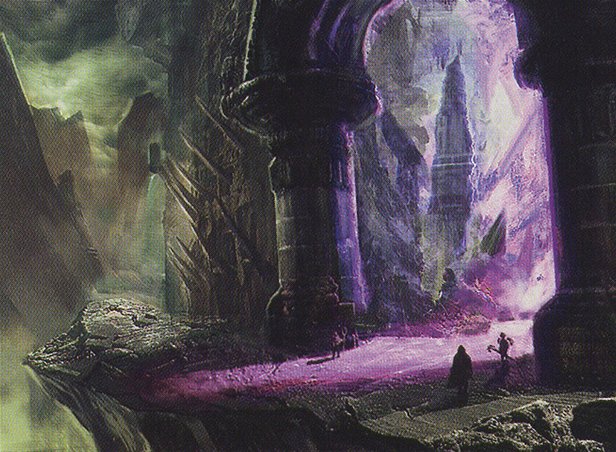
The Cryptlock
On the rear wall of the Crypt stands a massive stone sculpture that functions as a mystic lock, barring travelers from exploring the rest of the crypt. Archaeologists have concluded that the lock opens only on rare occasions during the death-hour just before dawn, and only when some unknown incantations are spoken. However, certain mad human, goblin, and vampire mages, calling themselves “witch vessels,” claim to have traveled down through the miles and miles of shelf-lined crypt tunnels behind the lock, and claim to have spoken in a lost “ghost tongue” with the thousands of dead bodies they say can be found there. They claim their communion has granted them knowledge of events to come, but warn that the tunnels are infested with lethal traps and other evils.

“The Three shall [convene/return?], and the Eye [illegible] shall produce its [utter/sheer?] fire, and the [illegible] shall Rize, and this Time no Soul shall [ascend/perish/escape?]”
Notes found near the Crypt of Agadeem, trans. Anowon the Ruin Sage

